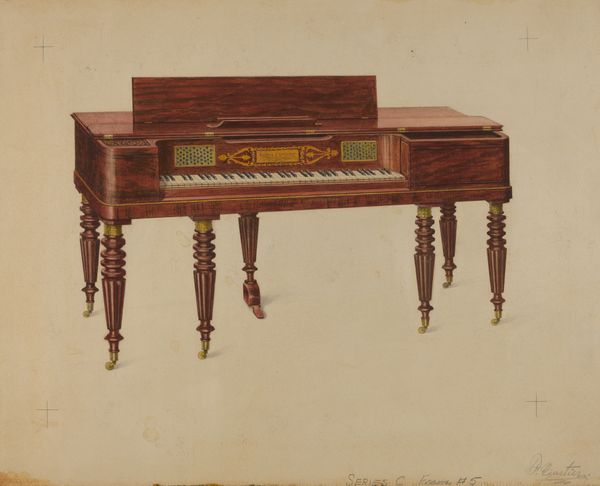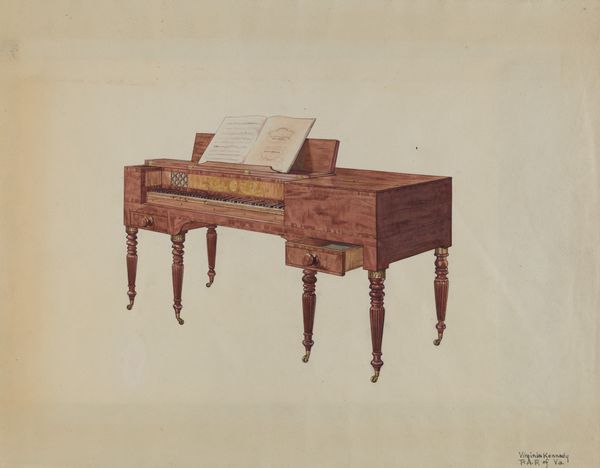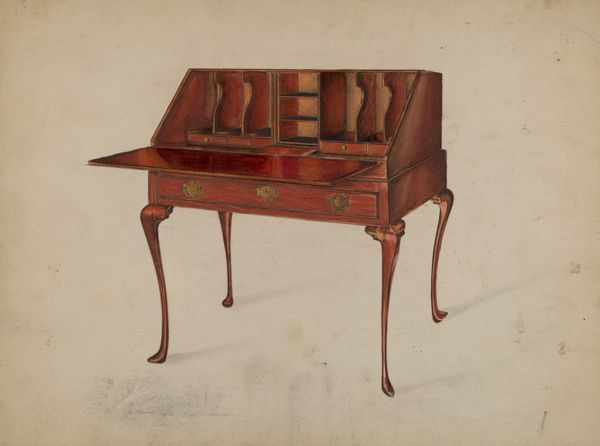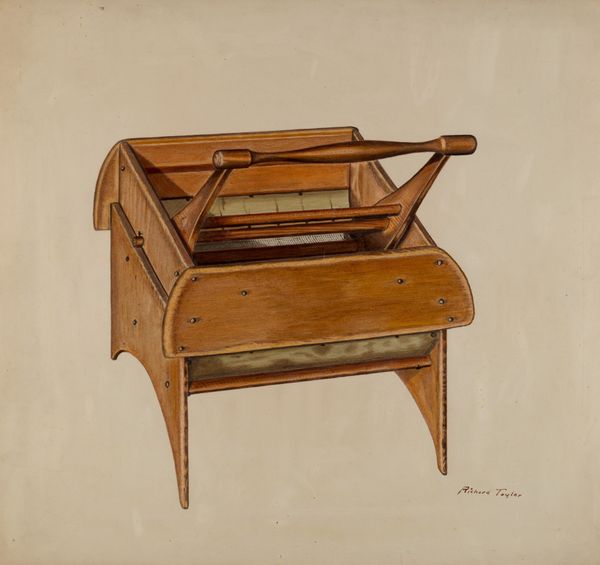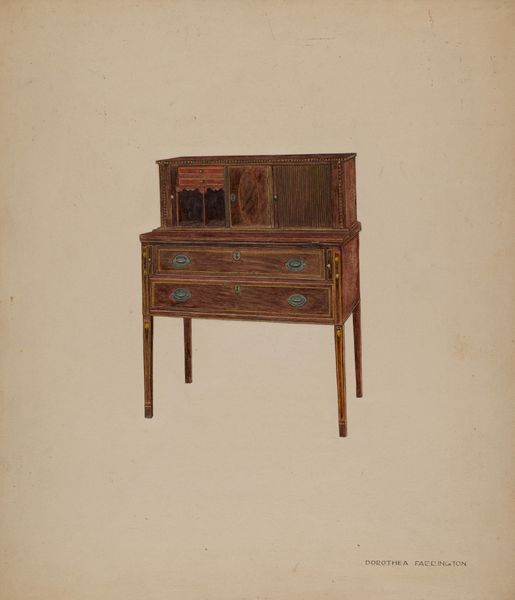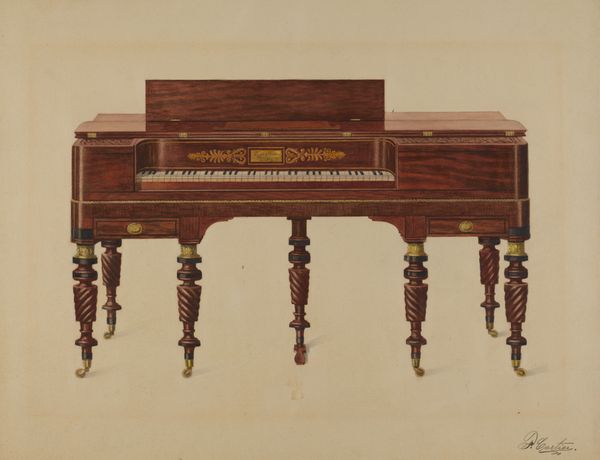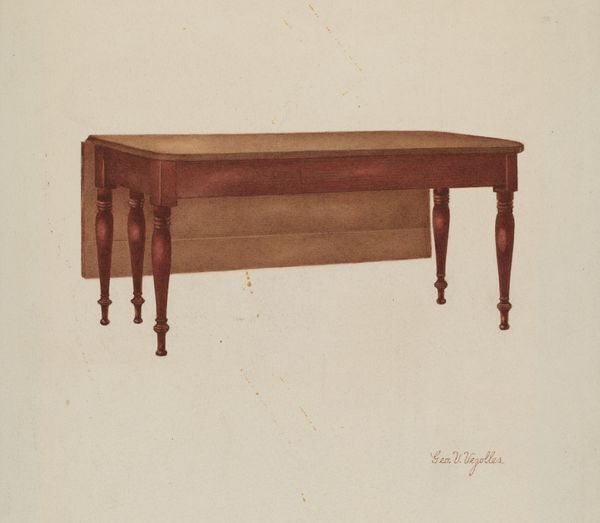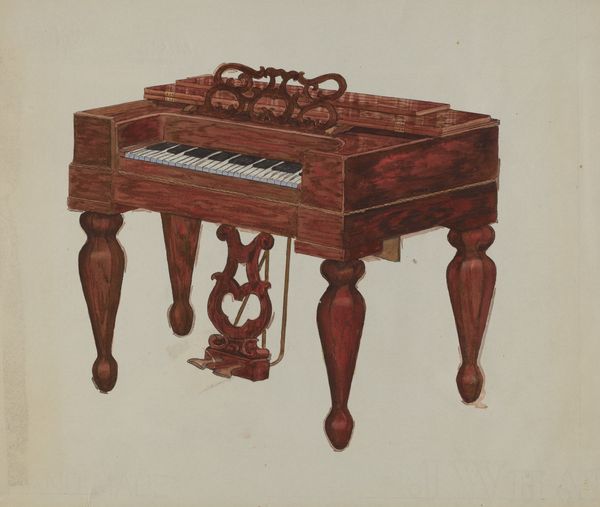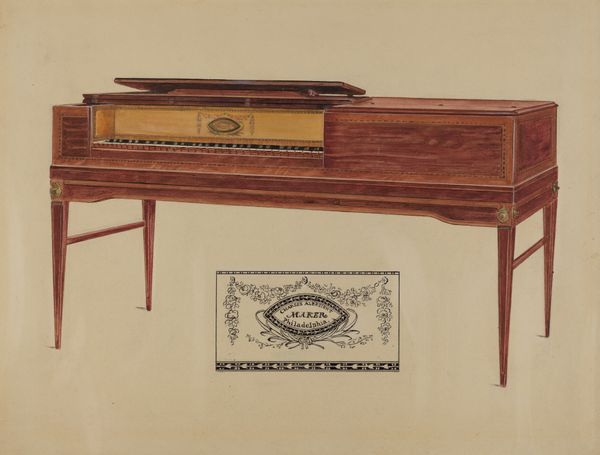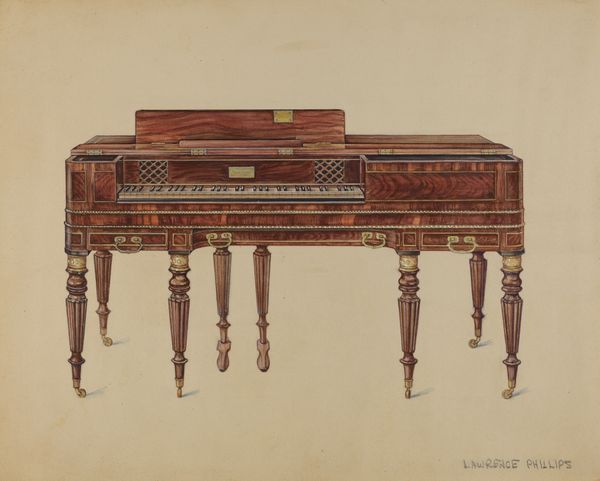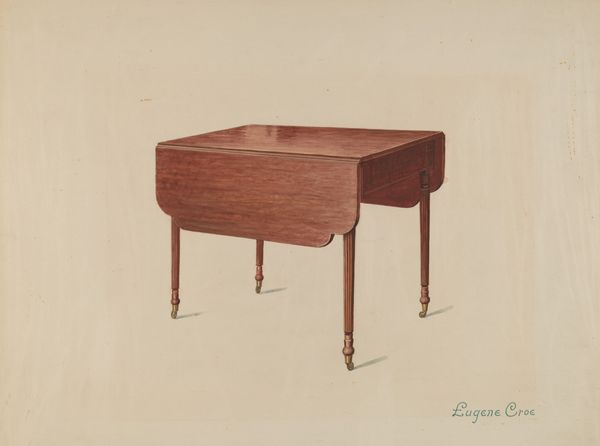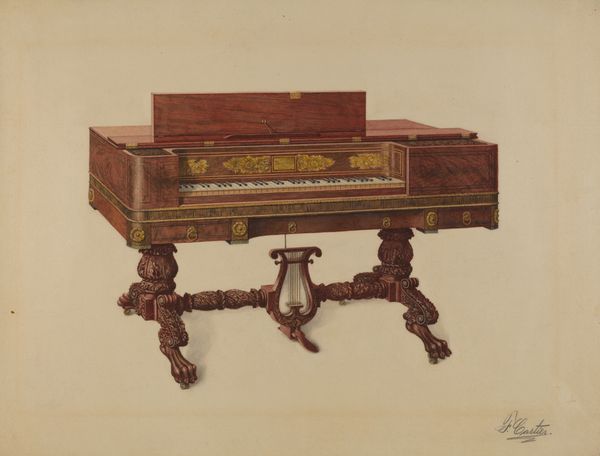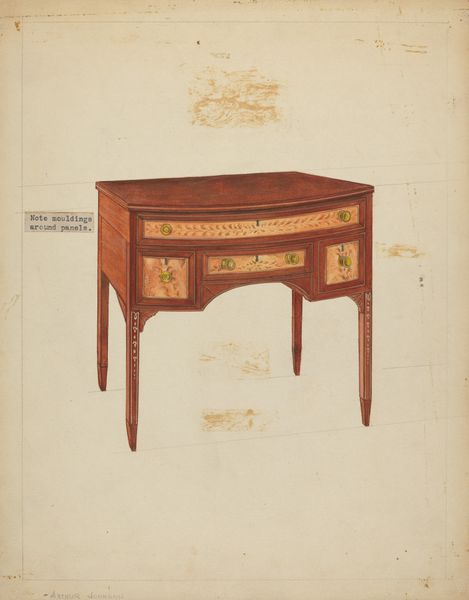
drawing, watercolor
#
drawing
#
furniture
#
watercolor
#
watercolor
#
realism
Dimensions: overall: 22.9 x 30.2 cm (9 x 11 7/8 in.) Original IAD Object: 38"high; top-25 3/4" x 18 3/4"
Copyright: National Gallery of Art: CC0 1.0
Curator: Looking at this work by Arthur Johnson, titled "Box Desk," dating from about 1936. It’s a rendering of furniture rendered in watercolor and drawing. Editor: Immediately, I’m struck by its restrained elegance. The colors are muted, almost academic. I sense a longing for a different kind of craftsmanship or a yearning for a kind of bourgeois tradition, perhaps? Curator: Considering the context, that sense of yearning could definitely speak to anxieties felt during the Great Depression, doesn’t it? A return to classical design elements might reflect the instability and perceived breakdown of the modern family, placing the home at the heart of the discourse on survival. This object becomes more than just functional. Editor: Yes, I’m drawn to the materiality suggested, even in this drawing. The wood of the desk, implied through the watercolor, presents a strong, sturdy structure, seemingly removed from mass production. The care taken in the turning of those delicate legs implies the maker’s dedication. Were those designs commissioned or simply speculatively drafted? Curator: Unfortunately, details about commission are limited. But this precise technique almost screams aspiration. To place this "Box Desk," in a specific space or social setting we can infer some of the prevailing dynamics from this carefully delineated piece. For whom would a desk like this be created and how would that impact relationships within the house? Editor: Indeed. Consider the very labor involved in producing something like this—the sourcing of the materials, the skill needed to work the wood, even down to the tiny drawer pulls! These processes stand in contrast to many art pieces whose "labor" lies solely in their conceiving. It’s a reminder of craft and pre-industrial modes. It feels deliberately distanced from new industrial methods that shaped consumption and material culture at the time. Curator: Absolutely. These designs offer insights into aspirations and anxieties that transcend pure functionality. The desk embodies a moment, where ideals about the home as a nucleus of society come under great societal change. Editor: So it is indeed a dialogue between technique, representation, and yearning, encapsulated in one meticulously drafted desk. The drawing becomes a lens through which to analyze broader questions about skill, social memory, and identity in design. Curator: Agreed. It leaves us considering how material objects communicate powerful stories about human existence during transitionary times, as much as they speak to style.
Comments
No comments
Be the first to comment and join the conversation on the ultimate creative platform.
